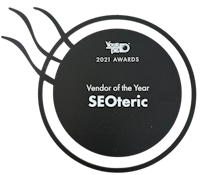Mastering Google Ads Display Keywords: A Strategic Guide for 2025
Google Ads display keywords have evolved significantly, transforming how businesses connect with their target audiences through visual advertising. The platform now offers unprecedented targeting capabilities, combining traditional keyword strategies with advanced demographic options – from basic filters like age and gender to sophisticated segments such as parental status, education level, and household income. This sophisticated targeting approach allows advertisers to create highly personalized campaigns that resonate with specific audience segments while maintaining cost-effectiveness.
The integration of artificial intelligence has revolutionized how display keywords function within the Google Ads ecosystem, making it easier for advertisers to reach their ideal customers across millions of websites, apps, and digital properties. By leveraging detailed demographics alongside traditional keyword targeting, businesses can now craft campaigns that speak directly to parents of infants, current college students, or specific industry professionals – creating a more nuanced and effective advertising strategy that drives meaningful results.
Understanding Google Ads Display Keywords: A Strategic Approach for 2025
Display keywords serve as powerful targeting tools within Google Ads, allowing advertisers to connect with potential customers across millions of websites, apps, and digital properties within the Google Display Network. These keywords function differently from traditional search keywords – rather than matching user searches, they help Google understand the context and relevance of websites where your ads should appear. The system analyzes the chosen display keywords against website content, ensuring ads appear on pages that align with your targeting objectives.
The evolution of display keywords in 2025 has brought significant changes, particularly with the integration of AI-powered contextual targeting. Advertisers now benefit from enhanced semantic matching, where Google’s algorithms understand the intent and meaning behind keywords rather than just exact matches. For example, if you’re selling organic skincare products and use display keywords like “natural beauty” or “clean ingredients,” your ads might appear on wellness blogs, eco-friendly lifestyle websites, and health-focused content platforms – even when these exact terms aren’t present.
Modern display keyword strategies require a balanced approach between broad and specific terms, combined with audience targeting for maximum impact. Successful campaigns often utilize themed keyword groups that reflect different aspects of their products or services, while also considering user intent and content relevance. The key lies in selecting keywords that not only describe your offerings but also match the contextual environment where your ideal customers spend their time online. This targeted approach helps maintain cost efficiency while ensuring your ads reach the most relevant audiences across the display network.
Frequently Asked Questions About Google Ads Display Keywords: Expert Insights
Display keyword targeting remains one of the most misunderstood aspects of Google Ads, leading to countless questions from both novice and experienced advertisers. The most common question revolves around the difference between display keywords and search keywords – while search keywords match user queries directly, display keywords help Google understand the type of websites and content where your ads should appear. This fundamental distinction shapes how advertisers should approach their keyword strategy for display campaigns.
Another pressing question addresses the optimal number of display keywords per ad group. While Google allows up to 5,000 keywords per ad group, successful advertisers typically work with 5-20 highly relevant keywords. This focused approach enables better control over ad placements and helps maintain campaign relevance. The key lies in selecting keywords that accurately describe the content of pages where you want your ads to appear, rather than trying to match potential customer searches.
The relationship between display keywords and audience targeting generates significant discussion among advertisers. Display keywords can work alongside audience targeting methods, including custom segments, affinity audiences, and in-market audiences. This combination creates a powerful targeting strategy that considers both content relevance and user intent. For example, an advertiser selling premium coffee machines might combine display keywords like “coffee brewing methods” and “specialty coffee” with an audience of in-market coffee enthusiasts, creating a highly targeted campaign that reaches users on relevant content pages.
The Future of Display Keyword Mastery
As Google Ads display keywords continue to evolve, advertisers who embrace both traditional keyword strategies and advanced targeting capabilities will stay ahead of their competition. The combination of AI-powered contextual matching, sophisticated demographic targeting, and strategic keyword selection creates a powerful framework for reaching specific audience segments with unprecedented precision. By understanding how display keywords work within the modern Google Ads ecosystem and leveraging these tools effectively, businesses can create more meaningful connections with their target audiences while maintaining cost-effective campaigns that drive measurable results across the vast Google Display Network.
For more information, check out the original article on Search Engine Land.













.png)

